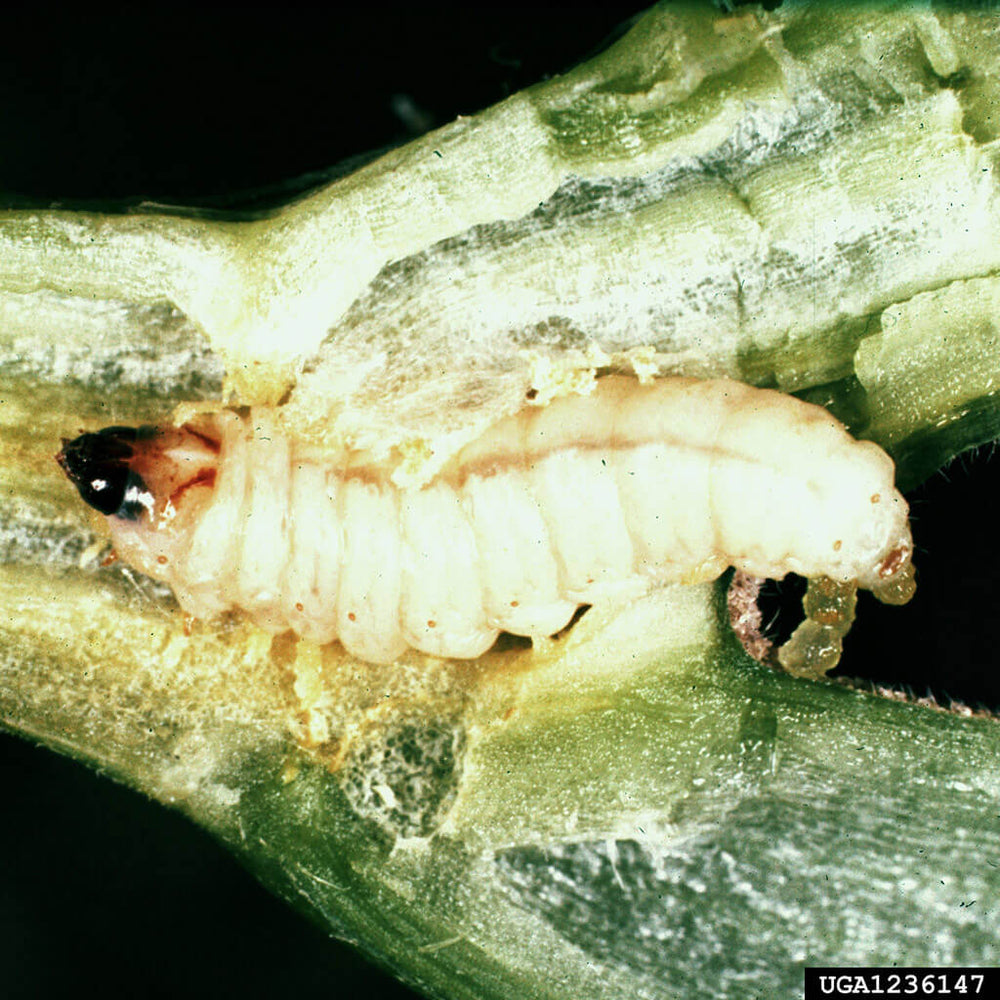
As you take your daily stroll around your garden, you notice that some of your squash plants have quickly wilted. You just watered, so what could be the problem? It could be squash vine borers. Here's how to tell, what to do if you have squash vine borers, and how to prevent them going forward.
How to get rid of squash vine borers
What are squash vine borers and what do they do?
Squash vine borers are serious enemies of squash and gourds. Named for the way they bore into stems, the borers' tunneling often kills whole plants, especially if they attack the base. If you see sudden wilting of plants and sawdust-like waste coming from a hole in the stem, borers are most likely at work inside. They tend to stick to squash and pumpkins, leaving other plants alone.
Borer larvae are fat and white with brown heads and can measure up to an inch long. Adults are moths with black and orange coloring.
Squash vine borers spend the winter in soil as larvae or enclosed in cocoons. Moths emerge in late spring and early summer and lay eggs on the stems of plants, where young larvae can bore in and begin feeding. Once they've done so, they're extremely difficult to control, which makes prevention key.
How can I prevent squash vine borers?
Because of the dangers squash vine borers pose to your plants, you're much better off preventing them in the first place than trying to get rid of them. Here are some reliable ways to keep squash vine borers at bay.
- Turn the soil regularly. Because borers spend the winter in soil, turn the soil in late winter to expose the over-wintering pests to killing cold in Northern regions. In warmer areas, turning the soil exposes the larvae and cocoons to predators, such as birds, skunks, and armadillos.
- Remove vines that die as a result of borers. Destroy these vines by burning taking them to an industrial compost facility, which burns at temperatures high enough to kill any remaining borers. Do not put them in your compost pile or you risk cultivating another generation of the insects.
Practice succession planting. Add new summer squash plants to the garden as soon as existing vines start to run. This will help ensure a steady supply of squash for harvesting.
- Plant vine borer-resistant squash. Some squash and pumpkin varieties, such as butternut, are nearly immune to attack. Others, such as Hubbard squash, are very susceptible.
- Use an organic spray. Spray stems and leaf undersides with Bt, or Bacillus thuringiensis, according to label directions as soon as plants begin to grow. Continue spraying throughout the growing season. Bt is an organic gardening-approved pesticide and isn't harmful to bees, which are critical for pollinating squash and many other vegetables. Learn more about solving garden problems organically.
- Use row covers. If you've had issues with squash vine borers in the past, grow plants beneath floating row covers or a row cover hoop house. Be sure to remove covers to admit pollinating insects when the plants begin to bloom.
What should I do if I have squash vine borers?
While squash vine borers often render plants unsavable, there is one thing you can try. Slit infested vines lengthwise to remove borers, then cover the slit stem with soil to encourage it to root and renew the plant. For more details, check out our Surgery for Squash Vine Borers article. Note that it's very important to water regularly at this time.
Need more info and local pesticide recommendations? Contact your regional Extension agent. You can find the nearest Extension office through the Cooperative Extension System map.
Unfortunately, if squash vine borers have already found their way into your garden, you likely have an uphill battle to save your squash this season. However, it is possible to win! And with the right prevention strategies, you can start fresh next year with healthy, pest-free squash plants.






 Herbs
Herbs
 Vegetables
Vegetables
 Fruit
Fruit
 Flowers
Flowers
 Succulents
Succulents


